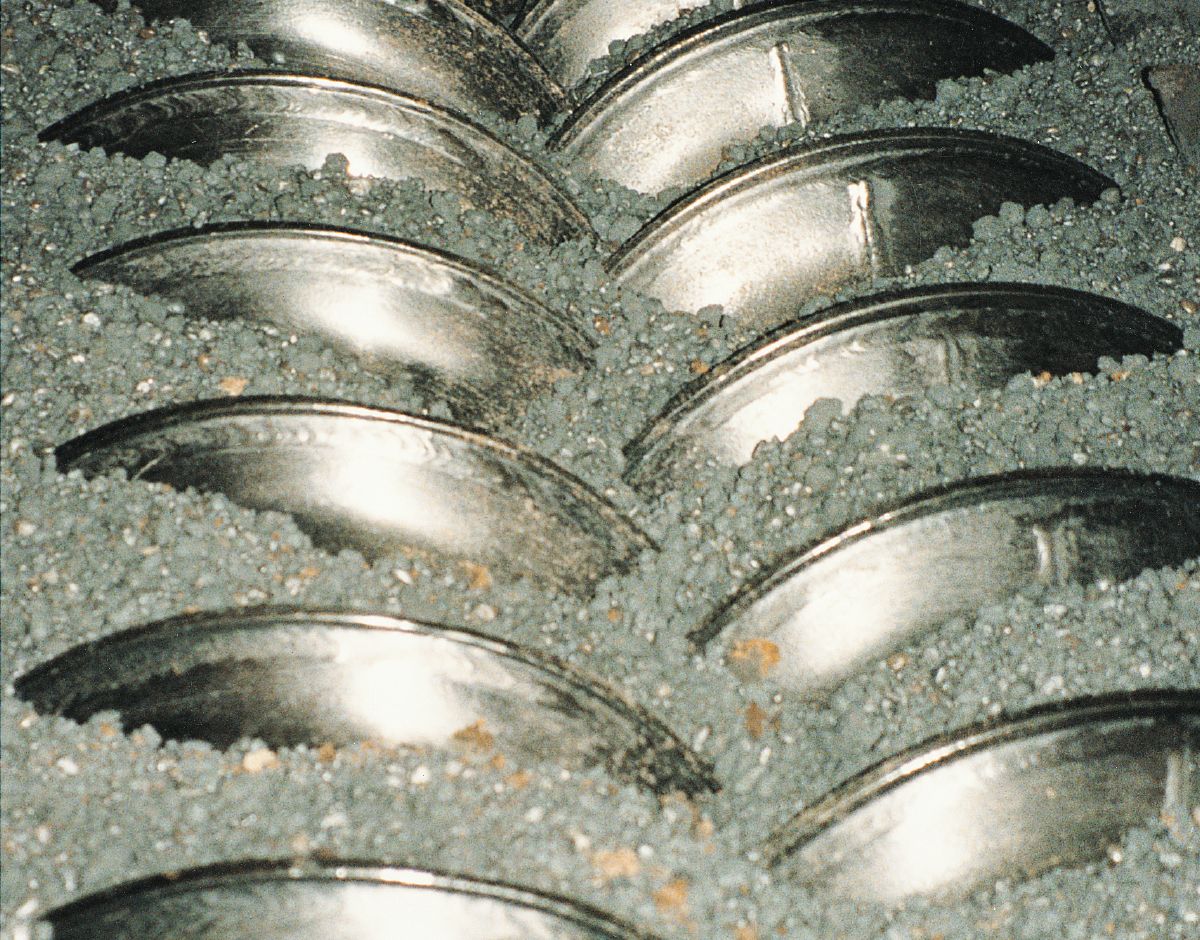Direct vs. indirect heat exchange in solving material moisture level challenges
Thermal processing can be done in two different ways, direct or indirect heat exchange. With direct heat exchange, heat comes in direct contact with your product, which can contaminate the material. In addition, the heat cannot be recycled, which reduces thermal efficiency.
The Holo-Flite uses indirect heat exchange which can be either a heating or cooling process. During this process, a heat transfer medium is circulated through the cavities of the machine’s screws and trough for better temperature control, minimized dust, and the ability to recycle heat, which means less risk for product contamination.
Within the machine, individual particles are heated, cooled, or dried as the product is continuously conveyed by means of rotating screw flights along a jacketed trough.
Both heat exchange methods have their benefits and challenges, but with indirect heat exchange, you gain more efficiency for less wasted product.
Greater efficiency, less product degradation, less costs – Benefits of the Holo-Flite
If one of your jobsite challenges is managing leftover ores that cannot be shipped due to retained moisture levels, indirect heat exchange is an easy solution.
The Holo-Flite can dry very fine materials using indirect heat exchange in addition to regulating moisture levels to ensure end product quality. Because the Holo-Flite recycles heat, heat is in constant contact with the material, and airborne heat loss is minimized for greater efficiency.
The operator of the Holo-Flite has complete control over the temperature as well as screw speed. Controlling the screw speed allows for less product degradation, minimal dust generation, and low maintenance costs.
The Metso Holo-Flite can be designed with single, double, or quadruple screw configurations to meet your application requirements. Additionally, your machine can be manufactured to operate under vacuum or pressure. (All machines are designed and fabricated per A.S.M.E. Code Section VIII, Unfired Pressure Vessels.)
Versatility of Holo-Flite makes it a staple in many applications
Due to its ability to heat, cool, or dry almost any material, this versatile machine has been used in a myriad of industries.
Besides treating bulk mineral materials—such as filter cakes, pastes, and sludges—the Holo-Flite has found its way into some niche markets, such as:
- Heating, cooling, and drying food products
- Cooling and drying biomass materials, including hemp and spices
- Cooling and drying molybdenum concentrate (steel production)
- Cooling petroleum coke (derived from oil refining)
- Lithium processing applications (for batteries and electric cars)
- Sanitizing medical waste
The most common applications of the Holo-Flite include processing minerals, industrial minerals, concentrates, limestone, ash, sugar, uranium yellowcake, granular salt, zinc, zinc sludge, carbon black, and even apple pie filling.
Fun fact: A Holo-Flite used to process apple pie filling in 1979 was sold to process gold ore for a customer in Guatemala. That Holo-Flite is still used to dry gold ore today at 500 degrees Fahrenheit (260 degrees Celsius).

